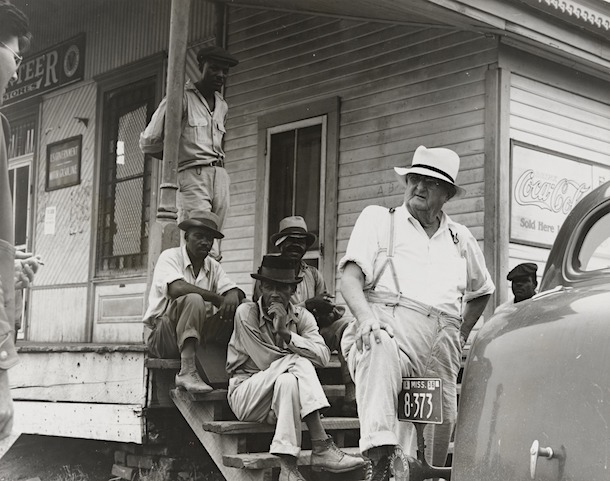
Dorothea Lange Plantation overseer and his field hands, Mississippi Delta 1936

• Over the past 24 hours US had +23,117 new cases (total 88,851) and +1,277 new deaths.
Note: both numbers are still well below White House predictions for the summer of 30,000 and 3,000, respectively
• Reported global new cases yesterday reached 100,184, new high.
• Russia reports 9,709 new coronavirus infections (yesterday: 9,200)

US states are Winning!
Alaska, Hawaii, Montana, Vermont, West Virginia, Wyoming
Also Guam and Virgin Islands
Congratulations!
Montana and Guam are near zero in the last week!
Nearly there: Idaho, Kansas, Maine, Michigan, New Jersey, New York, Puerto Rico.
Fantastic! pic.twitter.com/LbwIpqDPM2
— Yaneer Bar-Yam (@yaneerbaryam) May 16, 2020

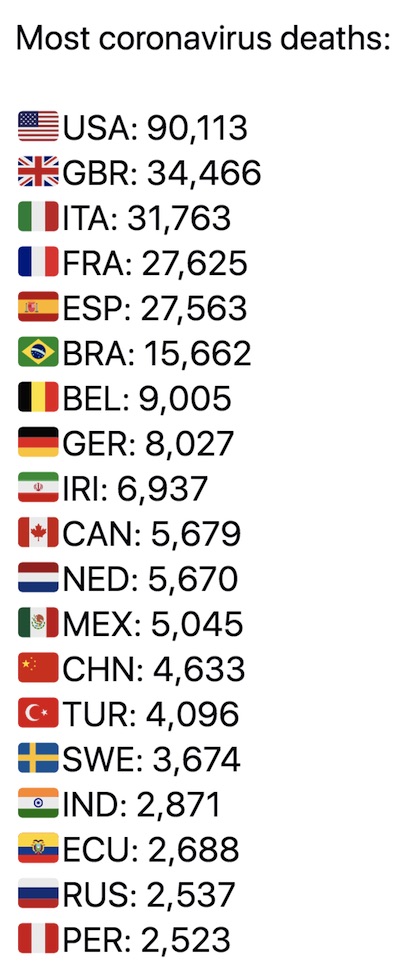

Note: new global cases yesterday 100,184
• Cases 4,743,181 (+ 97,795 from yesterday’s 4,645,386)
• Deaths 313,703 (+ 4,723 from yesterday’s 308,980)

From Worldometer yesterday evening -before their day’s close-
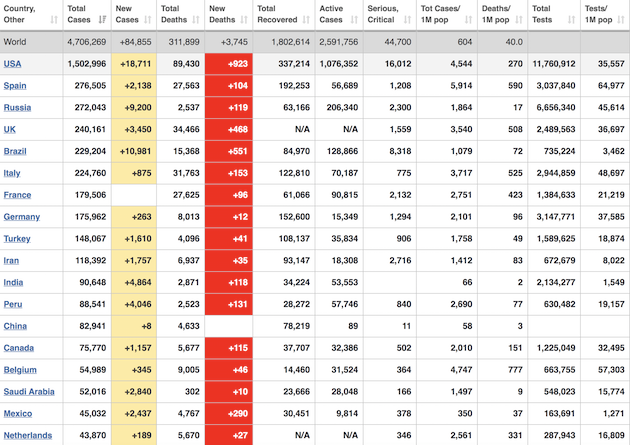
From Worldometer
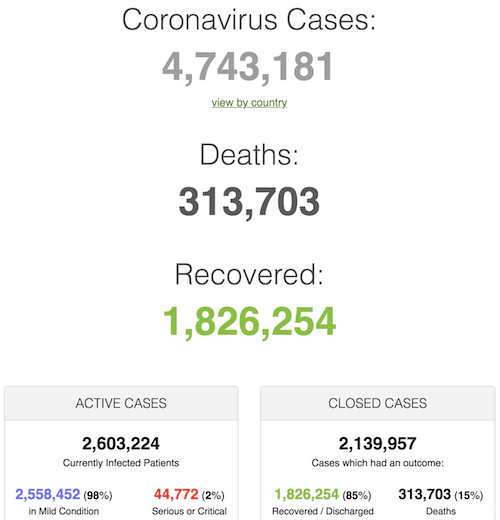
From SCMP:
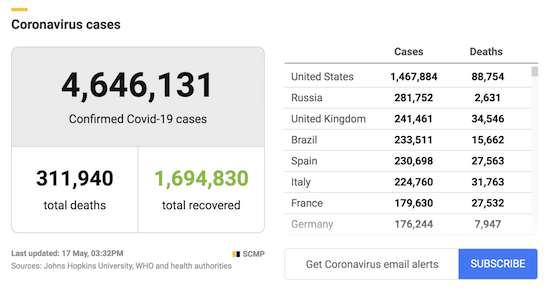
From COVID19Info.live:
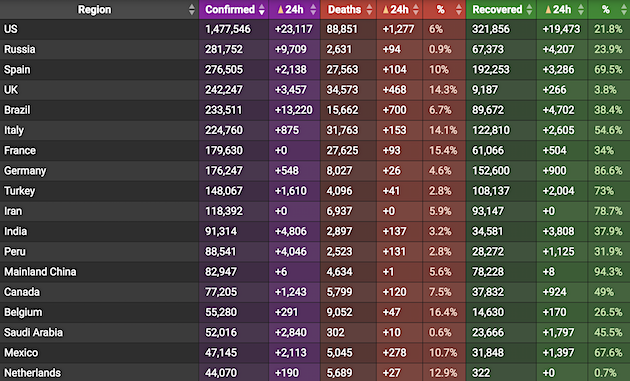

This by now is obvious. But I have my doubts over the following: “..This change in the blood is the result of severe inflammation in the lungs..”, because I haven’t seen any proof that it’s the immune system which makes the blood clot. Far as I can see, the stickiness could occur (e.g if virus impacts hemoglobin) before the blood reaches the lungs, and maybe even worsen the inflammation.
• A Third Of COVID19 Hospital Patients Develop Dangerous Blood Clots (BBC)
Up to 30% of patients who are seriously ill with coronavirus are developing dangerous blood clots, according to medical experts. They say the clots, also known as thrombosis, could be contributing to the number of people dying. Severe inflammation in the lungs – a natural response of the body to the virus – is behind their formation. Patients worldwide are being affected by many medical complications of the virus, some of which can be fatal. Back in March, as coronavirus was spreading across the globe, doctors started seeing far higher rates of clots in patients admitted to hospital than they would normally expect. And there have been other surprises, including the discovery of hundreds of micro-clots in the lungs of some patients.
The virus has also increased cases of deep vein thrombosis – blood clots usually found in the leg – which can be life-threatening when fragments break off and move up the body into the lungs, blocking blood vessels. [..] “With a huge outpouring of data over the past few weeks I think it has become apparent that thrombosis is a major problem,” says Roopen Arya, professor of thrombosis and haemostasis at King’s College Hospital, London. “Particularly in severely affected Covid patients in critical care, where some of the more recent studies show that nearly half the patients have pulmonary embolism or blood clot on the lungs.” He believes the number of critically ill coronavirus patients developing blood clots could be significantly higher than the published data in Europe of up to 30%.
The professor’s blood sciences team in the hospital has been analysing samples from patients showing how coronavirus is changing their blood making it much more sticky. And sticky blood can lead to blood clots. This change in the blood is the result of severe inflammation in the lungs, a natural response of the body to the virus. “In severely affected patients we are seeing an outpouring of chemicals in the blood and this has a knock-on effect of activating the blood clotting,” says Prof Arya. And all this ultimately causes a patient’s condition to deteriorate. According to thrombosis expert Prof Beverley Hunt, sticky blood is having wider repercussions than just blood clots – it’s also leading to higher rates of strokes and heart attacks. “And yes sticky blood is contributing to high mortality rates,” she says.

Which may all occur because of the impact on hemoglobin.
• China Adds Long-Term Organ Damage To List Of Effects Of COVID19 (SCMP)
Understanding is growing of the effects of Sars-CoV-2, the official name of the coronavirus that causes Covid-19, on the organs of patients – even after they apparently recover. While most patients, especially those with mild and moderate symptoms, can recover without long-term consequences to their health, studies indicate that those with severe symptoms can have organ damage and require a much longer time for rehabilitation. The commission said some Covid-19 patients might also develop heart problems such as angina and arrhythmia – conditions that could result directly from the virus or arise after a patient has been bedridden for a long time. The guidelines also list potential mental health problems resulting from Covid-19, including depression, insomnia, eating disorders and various changes in cognitive functions.
Other problems identified in the guidelines include muscle and limb-function loss. But kidney damage was not among the conditions named, despite a number of studies citing it as a potential long-term consequence. According to a study published in the journal Kidney International on Wednesday, one-third of 5,449 Covid-19 patients surveyed by researchers at Northwell Health, the biggest health provider in New York state, developed acute kidney failure. Lead researcher Kenar Jhaveri, associate chief of nephrology at Hofstra/Northwell in Great Neck, New York, told Reuters that 14.3 per cent of those with kidney failure required dialysis. There have also been reports of the coronavirus attacking the skin, the central nervous system and blood vessels, resulting in clogging and strokes.

The myth that 1 million tests per day would be enough is persistent. A myth because it would take a full year to test everyone.
• May 16 Update: US COVID-19 Test Results (CR)
The US might be able to test 400,000 to 600,000 people per day sometime in May according to Dr. Fauci – and that might be enough for test and trace. However, the US might need more than 900,000 tests per day according to Dr. Jha of Harvard’s Global Health Institute. There were 356,994 test results reported over the last 24 hours. This data is from the COVID Tracking Project. The percent positive over the last 24 hours was 7.0% (red line). The US probably needs enough tests to keep the percentage positive well below 5%. (probably much lower based on testing in New Zealand). NOTE: A few states are apparently including antibody tests with virus tests. The Covid tracking project is working to straighten that out.
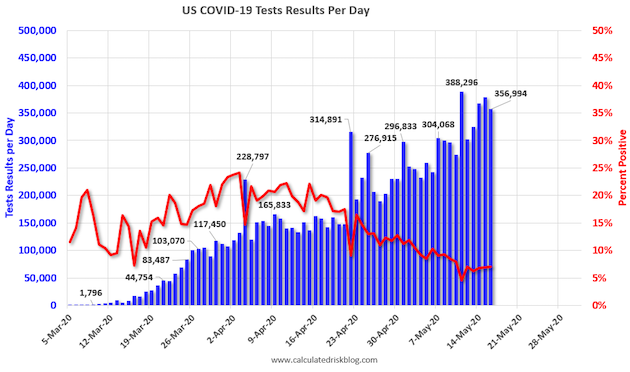

Just let them spit in your face and you’re fine.“In addition to larger antibodies like ours, llamas have small ones that can sneak into spaces on viral proteins that are too tiny for human antibodies..”
• Llamas Could Be Our Secret Weapon Against Coronavirus (G.)
The solution to the coronavirus may have been staring us in the face this whole time, lazily chewing on a carrot. All we need, it seems, is llamas. A study published last week in the journal Cell found that antibodies in llamas’ blood could offer a defense against the coronavirus. In addition to larger antibodies like ours, llamas have small ones that can sneak into spaces on viral proteins that are too tiny for human antibodies, helping them to fend off the threat. The hope is that the llama antibodies could help protect humans who have not been infected. International researchers owe their findings to a llama named Winter, a four-year-old resident of Belgium.
Her antibodies had already proven themselves able to fight Sars and Mers, leading researchers to speculate that they could work against the virus behind Covid-19 – and indeed, in cell cultures at least, they were effective against it. Researchers are now working towards clinical trials. “If it works, llama Winter deserves a statue,” Dr Xavier Saelens, a Ghent University virologist and study author, told the New York Times. To any llama aficionado, this news should come as no surprise. The animals have developed a reputation for healing. Llama antibodies have been a fixture in the fight against disease for years, with researchers investigating their potency against HIV and other viruses.
And their soothing powers go beyond the microscopic. Llamas have become exam-season fixtures at a number of top US colleges. George Caldwell, who raises llamas in Sonora, California, brings his trusted associates to the University of California, Berkeley, UC Davis, Stanford, and other northern California universities and high schools, where their tranquility is contagious, helping students overcome end-of-term anxiety. “When you’re around a llama, you become very calm and at peace,” one Berkeley senior said at a campus event last year.

CNN has an article on Dr. Zhong Nanshan, the Chinese government’s senior medical adviser, who, as featured prominently at the Automatic Earth at the time, infamously claimed in late January that the epidemic would be over in 10 days, so early February.
• Lack Of Immunity Makes China Vulnerable To Another Wave Of Coronavirus (CNN)
China still faces the “big challenge” of a potential second wave of Covid-19 infections, the country’s top respiratory authority has warned, with the lack of immunity among the community a serious concern as the race to develop a vaccine continues. Dr. Zhong Nanshan, the Chinese government’s senior medical adviser and the public face of the country’s fight against Covid-19, also confirmed in an exclusive interview with CNN on Saturday that local authorities in Wuhan, the city where the novel coronavirus was first reported in December, had suppressed key details about the magnitude of the initial outbreak.
China has reported more than 82,000 coronavirus cases, with at least 4,633 deaths, according to data from the country’s National Health Commission (NHC). The number of new infections surged quickly in late January, prompting city lockdowns and nationwide travel bans. By early February, China was reporting as many as 3,887 fresh cases a day. A month later, however, daily cases had dropped into the double digits — while in the US, the number of daily infections skyrocketed, from 47 new cases on March 6 to 22,562 by the end of the month. Having now largely contained the virus, life in China is slowly returning to normal. Lockdowns have eased and some schools and factories have reopened across the country.
But Zhong said Chinese authorities should not be complacent, with the danger of a second wave of infections looming large. Fresh clusters of coronavirus cases have emerged across China in recent weeks, in Wuhan as well as the northeastern provinces of Heilongjiang and Jilin. “The majority of … Chinese at the moment are still susceptible of the Covid-19 infection, because (of) a lack of immunity,” Zhong said. “We are facing (a) big challenge, it’s not better than the foreign countries I think at the moment.”
[..] Three US companies are already testing their vaccines on humans, according to the World Health Organization. They’re still in phase 1 or phase 2 trials, which typically involve giving the vaccine to dozens or hundreds of study subjects. Zhong said three Chinese vaccines are under clinical trials in the country — however a “perfect” solution was likely to be “years” away. “We have to test again and again and again … by using different kinds of vaccines. It’s too early to draw any conclusion which kind of vaccine is available for this kind of coronavirus … that’s why I suggest that the final approval of vaccine (will) take much longer,” he said.
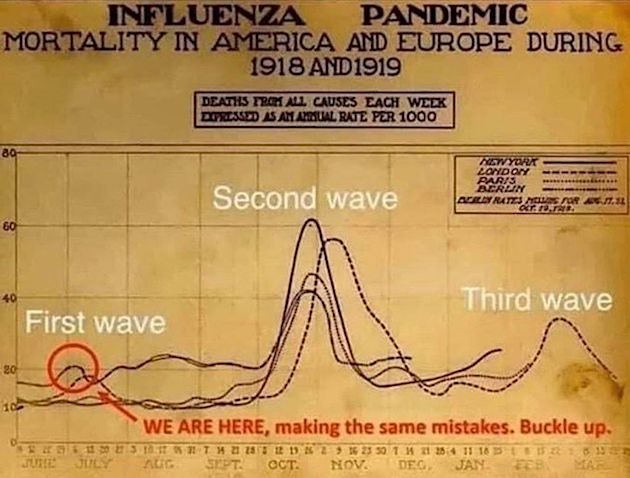

China’s going to stall.
• Battle Looms At WHO Amid Pressure On China Over Coronavirus Inquiry (SCMP)
The World Health Organisation has been on the front line coordinating the fight against the Covid-19 pandemic. When its decision-making body gathers, virtually, for its annual meeting on Monday, it will have another battle on its hands, as tensions escalate between China, the United States and other countries over Beijing’s response to the outbreak. The coronavirus will be the focus for the World Health Assembly meeting, to be attended by all 194 WHO member states plus observers, and where policies and budgets are reviewed and approved. But all eyes will be on how countries – including the US, Australia, Canada, France and Germany – pursue an investigation into China’s handling of the pandemic within the framework of the global health body.
That could include taking the Chinese government to the international court. Leaders of these countries have already made clear that they want an inquiry, including investigating the origin of the virus, whether it was initially covered up by China, and if Beijing was slow to tell the world that the virus was being transmitted between humans. The WHO has itself been under fire, attacked for praising China’s pandemic response as “transparent” despite Beijing’s suppression of whistle-blowers and information at the start of the outbreak. Under the WHO constitution, the global health agency can refer unresolved disputes to the International Court of Justice in The Hague, the main legal organ of the United Nations. But health and legal experts said that was unlikely – and even if it did happen, the ICJ would not be able to enforce a decision.
“The WHO has never taken another state to the ICJ, and I do not anticipate that,” said Steven Hoffman, professor of global health, law and political science at York University’s Global Strategy Lab in Toronto. “If it happens it will be unprecedented.” Atul Alexander, assistant professor of law at West Bengal National University of Juridical Sciences, said it would be impossible to enforce a decision by the ICJ as it would need to be enacted by the UN Security Council, where China has veto power as one of five permanent members. “China would have to consent to the jurisdiction of the ICJ, which is never going to happen,” Alexander said.

Only, that’s not what he said: “Have not made [a] final decision. All funds are frozen.”
• Trump Hints He May Reverse Course And Restore WHO Funding (F.)
President Donald Trump said his administration was considering restoring partial funding to the World Health Organization Saturday morning after suspending U.S. support a month ago in a row over how the group has handled the coronavirus pandemic. On Friday evening, reports began to surface that Trump was prepared to restore about 10% of previous U.S. payments to WHO, reported to roughly match China’s share. Trump hit back at those reports Saturday morning, saying in a tweet that “this is just one of numerous concepts being considered… Have not made [a] final decision. All funds are frozen.”
He announced he would withhold U.S. funding from the WHO on April 14, and accused the group of “severely mismanaging and covering up” the coronavirus pandemic, and said he wouldn’t consider funding until a “60-to-90-day” investigation was completed. WHO officials and China have denied Trump’s claims. The U.S. was the group’s biggest financial supporter, and reportedly provided about $400 million to $500 million of the WHO’s $4.8 billion budget, or about 15%. According to NPR, the U.S. was already nearly $200 million behind on payments to the WHO when Trump announced he would halt future contributions.

We’re going to have to look at how sick the economy was beforehand, or we’ll never get any wiser.
• Q2 US GDP Forecasts: Probably Around 30% Annual Rate Decline (CR)
Important: GDP is reported at a seasonally adjusted annual rate (SAAR). So a 30% Q2 decline is around 7% decline from Q1 (SA).
• From Merrill Lynch: “We are tracking -5.2% qoq saar for 1Q GDP and expect a -30% qoq saar plunge in 2Q. [SAAR May 15 estimate]”.• From the NY Fed Nowcasting Report “The New York Fed Staff Nowcast stands at -31.1% for 2020:Q2. [May 15 estimate]”.
• And from the Altanta Fed: GDPNow “The GDPNow model estimate for real GDP growth (seasonally adjusted annual rate) in the second quarter of 2020 is -42.8 percent on May 15, down from -34.9 percent on May 8. [May 15 estimate]”
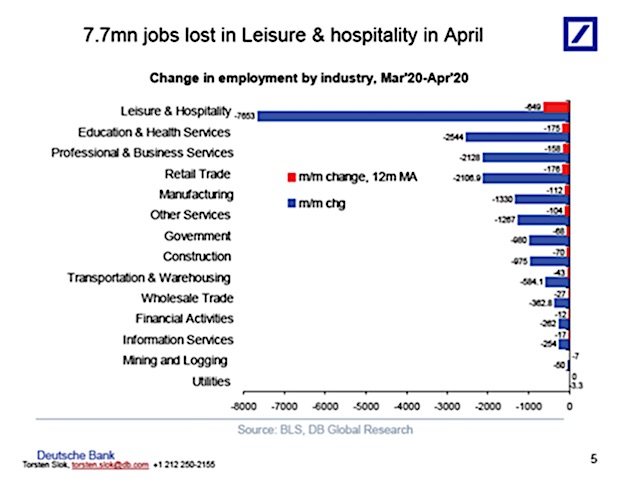

Chinese trolling. Still, reopening New York is a major gamble.
• Difficulties Abound On NYC’s Road To Reopen (Xinhua)
Life came to a grinding halt for about 8.3 million residents in New York City when a statewide “PAUSE” order went into effect to curb the spread of COVID-19 nearly two months ago. So far, schools, businesses, and Broadway theaters have been shuttered, with health care workers fighting tirelessly to save lives in overwhelmed hospitals. On Friday, five regions in the central and northern parts of New York state reopened following a phased strategy. Those regions, largely remote and account for less than one-fifth of the state’s population, have not been hit hard by the pandemic. New York City still has to wait, as it has not met the requirements for reopening in new hospitalization, share of total hospital beds and ICU beds available — three of the seven benchmarks set by the state government.
Mayor Bill de Blasio said this month that the city would not see eased restrictions before June, and a true reopening will be “a few months away at minimum.” Despite a flattened curve, the data in New York City remain staggering. By Saturday afternoon, the city’s health department has reported 189,031 cases, more than those of countries including France and Germany. A death toll of 20,576 accounts for nearly a quarter of the national total. “While the (daily new) case count appears to be decreasing, there is still a need for it to go lower, and to have the ability to detect and trace the contacts of cases to prevent a major resurgence in the virus,” Jeff Schlegelmilch, deputy director for the National Center for Disaster Preparedness at Columbia University’s Earth Institute, told Xinhua.
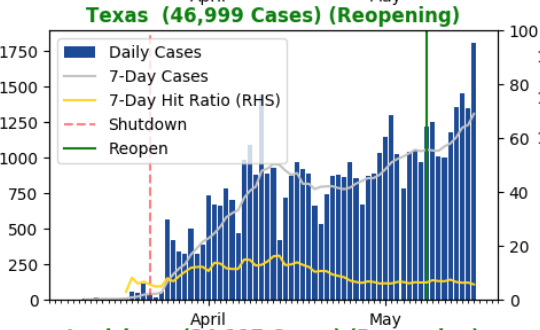
“In a densely populated place like New York City, none of these things are simple, and all of this needs to be done at a large scale with quick reaction to changes in conditions,” he noted. Experts and officials underlined the significance of testing at the beginning of the crisis in early March. Both the mayor and New York Governor Andrew Cuomo have repeatedly vowed to expand testing capacity, especially in lower-income and minority communities. After more than two months’ efforts, however, the supply still falls short of the demand. “Lack of widespread testing was our Achilles’ heel from day one,” said de Blasio on Thursday. “We’re still playing catch-up.”
Also on Thursday, the mayor announced that any person with COVID-19 symptoms as well as anyone who has been in close contact with a confirmed case is now eligible to receive a test in New York City, which means these basic containment measures have never been fully conducted in the epicenter of the pandemic. Notably, the importance of contact tracing was largely ignored or deemed a mission impossible by local officials. During a press briefing on April 3, New York City’s Health Department Commissioner Oxiris Barbot said contact tracing was “not a good use of our resources” and the city has gone “past the point of contact tracing.” It was not until late April that both Cuomo and de Blasio announced their plans to hire thousands of people to get trained to be contact tracers. The tardy response at the local level reflects the whole picture of the nation. “The United States in general is behind the curve, literally and figuratively, in terms of testing and contact tracing,” said Schlegelmilch.
Johan Giesecke. Professor, State Epidemiologist for Sweden. Part 2 pic.twitter.com/T18CwxH4dR
— Robin Monotti Graziadei (@robinmonotti) May 16, 2020

Is this just desperation? He’s one of the names, after all. He wanted to unmask Flynn, but doesn’t want to be unmasked himself.
Also, I’m so tired of hearing how the Russians are going to try again. It shows you how an absolutely dead meme can live on as a zombie in partisan media.
• Brennan Claims Release Of Names Is ‘Abominable Abuse Of Authority’ (Fox)
Former CIA director John Brennan, one of the officials who sought to “unmask” Michael Flynn during the presidential transition period, claimed Thursday the release of Obama-era names was an “abominable abuse of authority.” He called the recent actions by the Department of Justice to drop the case against Flynn combined with the release of names “blatant political corruption at the highest levels of U.S. government.” “When you have the administration– the White House, the attorney general, the acting head of the intelligence community all acting in concert to try to advance the personal interests of Mr. Trump… I think this is very, very serious,” Brennan told MSNBC’s Nicolle Wallace.
“I’m just hoping that individuals like Chris Wray who is a remarkable public servant, will continue to stay strong in the face of this type of abominable abuse of authority,” he said. Brennan, however, was not pressed by MSNBC’s Wallace and Brian Williams on why he sought the name of Flynn in the intercepted phone conversations of Russian ambassador Sergey Kislyak. Rather, he lashed out over the disclosure of the names of the Obama administration officials who purportedly requested to “unmask” Flynn’s identity. Brennan also said he feared Trump officials were not going to stop Russian interference in the presidential election.
“As we have talked about the upcoming November election, how the Russians and others are going to seek to try to once again interfere and influence the outcome, I just am very concerned that some of those at the very top are not going to fulfill the duties that are entrusted to them by the American people,” Brennan remarked.
A news anchor who got demoted for fabricating war stories interviewing a former CIA Director and paid network news "analyst" who got caught lying about drone strikes and spying on the Senate.
Impressive.
Why does nobody trust the media??!? A huge mystery: https://t.co/yDcreB4CHR
— Glenn Greenwald (@ggreenwald) May 15, 2020

How desperate is Obama’s renewed attack on Trump? What’s with the timing?
Last weekend, in a well-leaked conference call, it appears, Judge Sullivan took marching orders from former President Obama who suggested snaring General Flynn on a perjury rap for withdrawing his guilty plea, and whaddaya know, the stratagem laid itself out this past week like a fully-crafted macramé, all the little tufts and knots neatly in place – thanks to the busy little fingers of Lawfare attorneys burning the midnight oil all week to get the thing hoisted up on the wall. The tortured logic of the scheme was really something to behold: by withdrawing a guilty plea Flynn had entered under oath, he would be guilty of lying to the court about being guilty in the first place, and therefore had perjured himself. Imagine the interior of the legal minds responsible for that: dank chambers of rot crawling with centipedes and mealybugs of subterfuge.
The judge’s transparently perfidious moves revealed the desperation of Mr. Obama and scores of former and current officials allied with him, who are themselves liable for prosecution in the unraveling tapestry of RussiaGate. There is a sentiment welling up in this land that enough is enough with these devious pranks of crooked lawyers, and today, being Friday, would be an excellent moment for the DC District US Court of Appeals to issue a writ of mandamus for Judge Sullivan to cut the shit and get on with his bound duty to put the Flynn case to rest. A nice added touch, if necessary, would be to kick Judge Sullivan’s seditious ass off the case and replace him with a judge who understands established law and precedent.

Always a relevant question, but perhaps not most appropriate when the walls are caving in.
• Economic Growth: Who Needs It? (Ms.)
Ardern hasn’t claimed to be post-growth, but her government’s aim of well-being provided a simpler, faster response to the pandemic than U.S. officials worried by GDP. In early March, with only eight reported cases of COVID-19 in a population of 4.8 million people, New Zealand anticipated the impact on an economy dominated by tourism. They quickly created a twelve billion Kiwi (NZ$) stimulus package (about $7.3 billion in US$), equal to about four percent of their nation’s GDP. Ninety percent of those Kiwi’s went directly to people for income support, wage subsidies, and tax relief for small businesses. Only a fraction went to their airline industry.
By comparison, in late March, the US reported 136,880 cases of COVID-19 in a population of 327 million. Our $2 trillion CARES (Coronavirus Aid, Relief & Economic Security) stimulus equaled 9.8 percent of GDP, yet only thirty percent, or about $604 billion, was slotted for direct payments and expanded unemployment benefits. Some mortgage and student loan payments were suspended, but not forgiven. Fully a quarter of CARES money went to big corporate loans, mostly for airlines to the tune of about $58 billion. A set aside for “national security” is widely believed to be for Boeing—remember them?
The Small Business Administration (SBA) got $350 billion, nearly 20 percent, but almost entirely for loans, and to businesses not as small as most women-owned micro-businesses. Another quarter of the CARES Act increases health and education funding through state block grants, municipal funding and increases for SNAP and WIC food programs. All bring with them a world of bureaucratic complications for the majority women in this crisis.

We try to run the Automatic Earth on people’s kind donations. Since their revenue has collapsed, ads no longer pay for all you read, and your support is now an integral part of the process.
Thank you.

https://twitter.com/i/status/1261813182353596421

https://twitter.com/i/status/1261870194886094848



Support the Automatic Earth in virustime.








Home › Forums › Debt Rattle May 17 2020